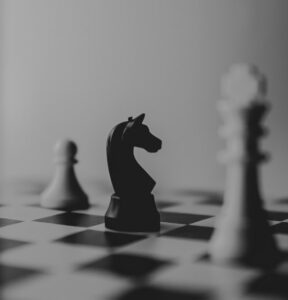The origins of chess are a subject that has been examined and debated for centuries. The game itself is thought to have originated in India or Persia, but the exact date and location are still unknown. We do know that people have been playing chess for over 1000 years, though–and that means there’s plenty of history to study! In this article we will explore some theories about how chess became so popular in Europe and what it means to play chess today.
The origins of chess
The origins of chess are not clear, but there is no doubt that chess originated in the ancient world. The Greeks played a game called “chess”, and it was known as a popular game during the reign of King Charlemagne. However, the rules of this game are unclear and still a mystery to all of us, so we cannot say for certain that this version of chess has anything to do with our version.
The Chess of the Shahnameh

In the Shahnameh, or Book of Kings, Ferdowsi tells the story of the Persian Empire. It is one of the national epics of Iran and consists of a poem written in verse (a total of 60,000 lines). The epic covers a period from creation until Alexander’s conquest. It encompasses both real historical events as well as legends and mythology. Its main focus is on kings and heroes who fought against evil forces to bring prosperity to their people. The book also mentions chess as a game fairly similar to the chess we have today. Many people debated whether this is the true origin of the game, or had it existed even before this.
The age of exchange and sacrifice
As the game grew in popularity, it also changed. The age of exchange and sacrifice was a time of great change, innovation and growth for chess. It is sometimes referred to as “the middle ages” because that’s when chess was evolving into its modern form.
Modern chess
Modern chess is a game of skill, not chance. The modern game has eight white and eight black pieces on a board of 8 x 8 squares. Players alternate turns, each moving one piece per turn (except in some cases when they can move several pieces at once). A player wins by capturing the opponent’s king or by checkmating him.

The rules governing the moves of individual pieces are relatively simple: pawns can only move forward one square on their first move, but may then capture an opposing piece diagonally in front (to the left or right); bishops may also move diagonally as well as horizontally and vertically; rooks can move any number of vacant squares; knights have an unusual movement pattern which goes three steps horizontally followed by one diagonal step; queens are more powerful than bishops because they can move both horizontally and vertically! Most importantly though: no matter how many moves it takes—even if it takes thousands—no piece may ever “hop” over another piece to capture it!
These are important milestones in the history of chess.
- The Greek origins of chess
- Chess in the Shahnameh
- The Age of Exchange and Sacrifice (1250-1400)
- Modern chess
Conclusion
The history of chess is more than just a history of a game. It’s a part of our world and culture, and it has evolved over time as our societies have changed. We can see how the game has been shaped by different cultures and eras throughout history, but each one brings its own unique flavor to the table—and that means more variety for us today!

